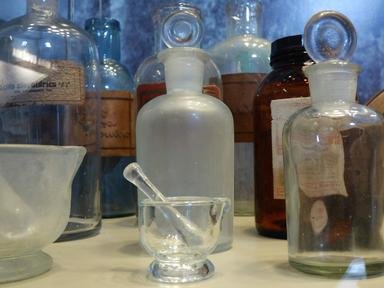Quiz Answer Key and Fun Facts
1. Which of these four elements is a lanthanide?
2. Which of the following four elements is a nonmetal?
3. Which of the following elements was once used in the definition of the meter?
4. Which of the following four elements is an alkaline earth metal?
5. Which of the following four elements would be a solid at 100°C (212°F/373K)?
6. Which of the following elements can form an explosive mixture with air?
7. Which of the following elements cannot be found in nature?
8. Which of the following elements has a poisonous "white" and a safe "red" allotrope?
9. Which of the following elements has no stable isotopes?
10. Which of the following elements exhibits a property called catenation?
Source: Author
WesleyCrusher
This quiz was reviewed by FunTrivia editor
rossian before going online.
Any errors found in FunTrivia content are routinely corrected through our feedback system.
